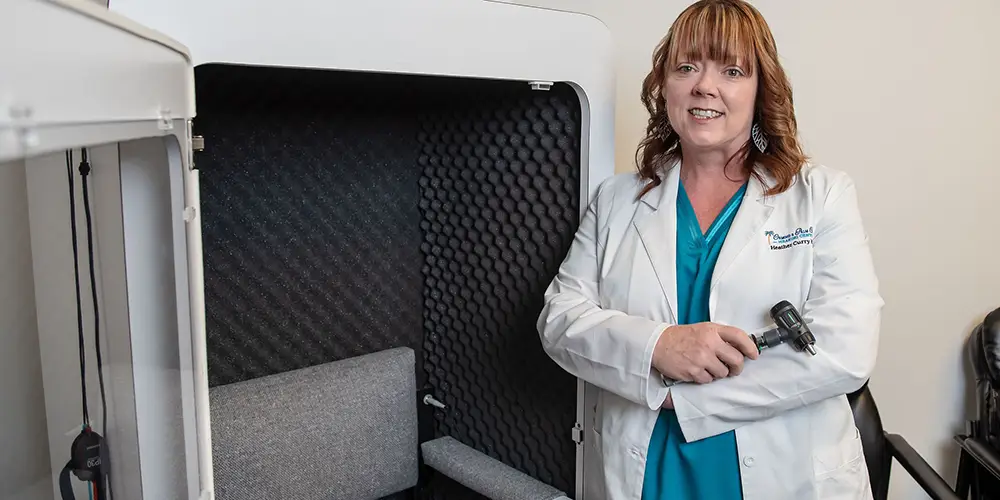
Hearing Testing
We encourage everyone to have their hearing screened at least once a year. That allows us to document where your hearing is, and then be able to monitor it over time. The incidence of hearing loss increases with age. About 1/3 of Americans between ages 65 and 74 and almost half of those over age 75 have hearing loss. On average most people wait for ten years before they do anything about their hearing problems – and this is not good!
Auditory deprivation is a damaging state that happens when the hearing nerve is understimulated. The entire auditory system is compromised when hearing loss is not addressed. Auditory deprivation means that if a sound is not reaching the ear, then it is not reaching the brain, leading to atrophy.
Come In for a Hearing Test
A hearing assessment means that you care about your general health and your communication with your loved ones. We can adjust your hearing aids to ensure they fit properly physically and acoustically, and ensure that you have adequate amplification in BOTH ears – both of these factors contribute to a reduction of auditory deprivation in the hearing impaired.
Take care of yourself: schedule a hearing evaluation at the first signs of hearing loss. Don’t ignore hearing loss – most of the time it does not go away on its own. Hearing instruments can also help treat tinnitus, which is ringing or other noises in the ears. 45 million Americans have tinnitus and it is typically related to hearing loss. There is no cure but we can help you with a custom treatment plan that will treat this issue.
What To Expect
You will fill out some forms that will be mailed or emailed to you prior to your appointment. The questions will include self assessments of your hearing, general health history, and lifestyle.
Our testing will include a comprehensive audiologic evaluation. We do this thoroughly in order to determine the type and severity of hearing loss, so that we can then customize our recommendations for treatment.
First, the ear canal is inspected for wax or debris with an otoscope, ask your provider to see your ear on the TV screen! The eardrum is visualized, and then tested with a short and painless pressure test to determine the function of the eardrum and the middle ear system. The reflexes present in the middle ear and brainstem will then be analyzed with tones. Then the health of the outer hair cells will be diagnosed with a short otoacoustic emissions test. Once this objective testing is through, the subjective test begins. You will be asked to respond to soft tones, repeat soft words, repeat loud words, and discern speech in the presence of background noise.
These results will be evaluated and reviewed with you, and sent to your primary care physician for your records. Your provider will help you choose a treatment plan that aligns with your needs and your budget.

Palm Coast Hearing Center
377 Palm Coast Pkwy SW., #3
Palm Coast, FL 32137
Dr. Indira Alvarez, Au.D., F-AAA
Heather Curry, H.A.S.
(386) 283-4932
[email protected]Office Hours (By Appointment Only):
Mon-Fri 9am-4pm, Closed 12pm-1pm
